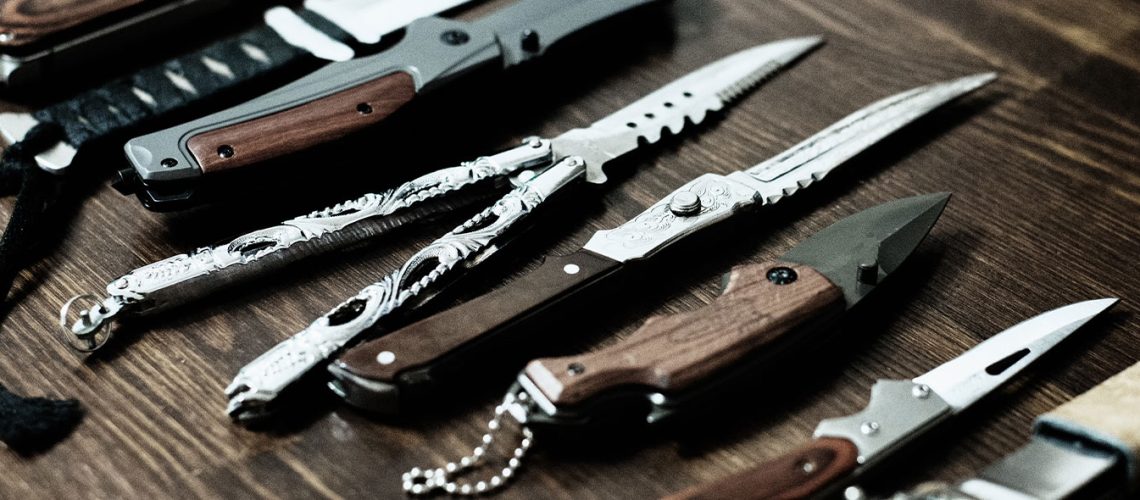 Even if you carry a firearm every day, there are some places and some situations where carrying a knife for personal defense may be a useful option for you.
Even if you carry a firearm every day, there are some places and some situations where carrying a knife for personal defense may be a useful option for you.
Like every form of personal defense, it will take some time, consideration, and practice to fully incorporate a knife into your overall self-protection plan. Your first consideration is an obvious one.
WHAT KNIFE IS LEGAL?
Before selecting a knife for self-protection or everyday carry, you’ll want to know the specific laws that will apply to you regarding knives.
Federal law can restrict the sale and transportation of knives. For example, the Transportation Security Administration (TSA) bans knives—along with razor blades, swords, and utility blades—on board a plane. However, domestic air travelers can pack knives in checked baggage if the knife is sheathed or securely wrapped.
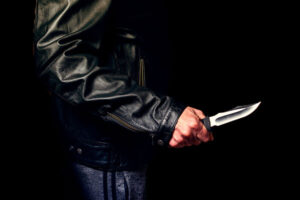 Federal law can restrict the sale and transportation of knives. For example, the Transportation Security Administration (TSA) bans knives along with razor blades, swords, and utility blades on board a plane. However, domestic air travelers can pack knives in checked baggage if they knife is sheathed or securely wrapped.
Federal law can restrict the sale and transportation of knives. For example, the Transportation Security Administration (TSA) bans knives along with razor blades, swords, and utility blades on board a plane. However, domestic air travelers can pack knives in checked baggage if they knife is sheathed or securely wrapped.
State laws vary drastically when it comes to knives. They’re not always completely straightforward.
Massachusetts, as an example, has a slightly confusing knife law. The state doesn’t really limit what you can OWN. Balisong knives, butterfly knives, switchblades, automatic knives, dirks, daggers, stilettos, push knives, knives with brass knuckles, and throwing knives are all just fine TO OWN.
However, carrying or concealing any of those knives is a whole different story. In Massachusetts, although you can OWN all of those knives, it’s not legal to carry them or conceal them on your person. They’re legally considered a “dangerous item” in the state.
So, it’s important to remember that there are different laws both for owning certain types of knives, and for carrying certain types of knives. And those vary from state to state.
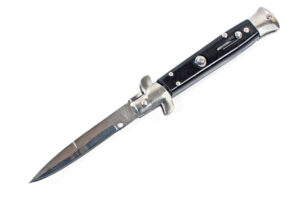 If you’re considering carrying a knife for self-protection, you MUST begin by learning the applicable laws in your area. Otherwise, you could be starting off a self-defense situation by violating the law yourself.
If you’re considering carrying a knife for self-protection, you MUST begin by learning the applicable laws in your area. Otherwise, you could be starting off a self-defense situation by violating the law yourself.
Generally, a short-bladed (2 or 3 inches) pocketknife is legal virtually everywhere. The longer the blade, the greater the likelihood state laws will deem the knife to be illegal or be subjected to restrictions. Knives for utility use like pocketknives or Leatherman multi-tools are also generally legal.
KnifeRights.org has a great app (Legal Blade) that can help to inform you of the requirements where you live or travel.
ADVANTAGES OF CARRYING A KNIFE
As mentioned before, a knife is a legitimate choice when you can’t carry a gun, or when the gun you have runs out of bullets in a self-protection situation.
There are other advantages of a knife, too. They’re easy to buy if you’re buying a legal knife. No background check or license needed.
They’re easy to conceal in most cases. They’re more of a deterrent than a kick or punch alone. Plus, they’re a tool that is actually useful for a myriad of other tasks. They never run out of “ammo” and you generally don’t have to worry about bystanders. And, the lethal force of a knife is far less than that of a firearm.
SELECTING A KNIFE
Obviously, the first criteria in your selection are whether the knife is legal.
Then, there are a number of other considerations when selecting a knife for self-protection.
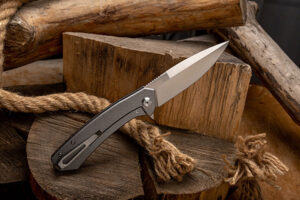 Do you intend to conceal the knife? If so, where on your person? Where and how you carry will determine what size of knife you can accommodate. And, it will introduce you to the question of whether you should carry a fixed-blade or a folding blade knife, which we’ll cover in more detail.
Do you intend to conceal the knife? If so, where on your person? Where and how you carry will determine what size of knife you can accommodate. And, it will introduce you to the question of whether you should carry a fixed-blade or a folding blade knife, which we’ll cover in more detail.
How does a particular knife feel in your hand? Do you like the weight and balance? Can you close your hand round it firmly and tightly? Is the handle made of a material that will become slippery if your hand gets sweaty?
Picking your knife is based on all these considerations.
FIXED VS. FOLDING
A folding knife—like a pocketknife—is easy to conceal, maintains the element of surprise, is easily transported, and can be well-constructed if you want to pay for quality.
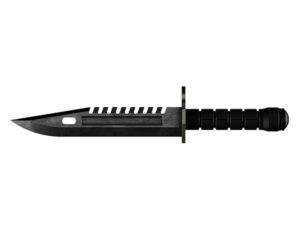 However, a fixed knife is generally stronger than a folding knife. A fixed blade knife is easy to maintain due to no hinge. A fixed knife is longer than a folding knife most of the time, and it’s tactically efficient in that it’s ready to be used once drawn.
However, a fixed knife is generally stronger than a folding knife. A fixed blade knife is easy to maintain due to no hinge. A fixed knife is longer than a folding knife most of the time, and it’s tactically efficient in that it’s ready to be used once drawn.
DEFENDING YOURSELF
Like any form of self-protection, a knife takes a certain amount of strategy, and practice—depending on your comfort level, and how you intend to use it.
Because a knife is a deadly weapon, it should only be used when a person believes they are in danger of harm. A common way to assess such a threat is ability, opportunity, and intent. Some people who are not willing to carry a gun will carry a knife thinking it a less legally-serious option. While it may fit different carry laws, using a knife in self-defense is still generally considered lethal force in the same way deploying a firearm is considered lethal force.
Does the threat have the ability to cause harm? (Do they possess their own weapon or pose a physical threat?) Is there an opportunity to cause harm? (Are they within your proximity?) And is there an intent to cause harm? (Have they stated or demonstrated the intent to injure?)
If so, it’s time to protect yourself.
There are two knife grips commonly associated with self-defense. Forward, and reverse. A forward grip features the tip of the blade pointing up, and it’s a grip used for stabbing. A reverse grip, conversely, has the tip of the blade angled down. This grip is used for slashing.
Although there may be tactical reasons for choosing one grip over another, the best grip is the one that feels most comfortable to you. And it will take practice to manipulate your knife skillfully and quickly for defense—particularly if it’s a folding knife that requires dexterity that can have it open and at the ready when needed.
Obviously, you’ll need to train specific to your knife and style of defense. However, you will not want to stand flatfooted. Try to stay on the balls of your feet for more and quicker mobility. And, stand sideways to your assailant to avoid taking direct punches or strikes.
If possible, don’t let your attacker see your knife. Why give them any advantage at all?
Taking the time to learn the applicable laws regarding carrying a knife for self-protection, learning how to handle the knife, and then determining how you plan to carry for self-protection can result in a knife becoming another layer of self-defense in your arsenal of protection.
